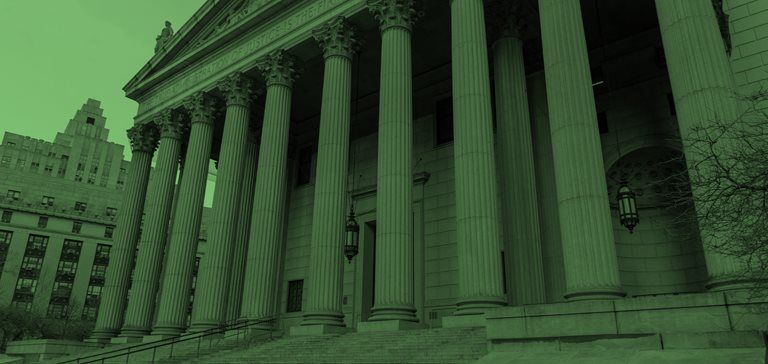Two unprecedented opportunities to reduce federal student loan debt are now on the table, and the leadership of the National Society of Black Engineers is encouraging every NSBE member to check your eligibility and, if you qualify, participate!
On Aug. 24, the Biden-Harris administration announced its long-anticipated answer to the huge and growing problem of student debt in the United States. The latest debt relief for federal student borrowers came as the lead element of a three-part plan the administration labeled as a boost for upward economic mobility for working families and assistance in helping them recover from the economic strains caused by the COVID-19 pandemic.
As the administration pointed out, the burden of U.S. student debt falls disproportionately on people of color and women, groups that have long lagged far behind in income and wealth because of well-documented, historical and continuing racism and discrimination. And as the administration’s fact sheet for its debt relief program states, “Twenty years after first enrolling in school, the typical Black borrower who started college in the 1995–96 school year still owed 95% of their original student debt.” Student loans are the largest portion of the collective debt of Black Americans, forming a greater debt load than homeownership, “which we, as Black people, will never achieve at parity until we are free from the burden of debt incurred from the cost of educational advancement,” notes NSBE Chief Executive Officer Janeen Uzzell.
Predictably, the administration’s plan was not universally embraced. Vocal opponents included those who claimed it gave far too much as well as those who found the five-figure loan relief woefully inadequate. Nonetheless, student loan forgiveness remains a real financial gain for many, but only for a finite period of time.
Biden-Harris Student Loan Relief – The Basics
How Much $$$
Holders of federal student loans — students, parents, anyone who has taken a student loan — can have up to $20,000 of their loan canceled through the administration’s plan. Individual Pell Grant recipients who earned less than $125,000 in 2020 or 2021 qualify for the maximum. The income limit for couples is $250,000. Borrowers in that income range who have not received a Pell Grant can have up to $10,000 of their federal student loans forgiven. The White House estimates that 20 million borrowers will have their debt erased and another 23 million will benefit from the one-time loan forgiveness.
What Kind of Loans?
Federal undergraduate, graduate student and Parent PLUS loans are all eligible for the forgiveness. Non-federal loans are not eligible.
How to Apply!
The application for the loan forgiveness will open soon, in October. Application is mandatory for all borrowers whose income is not already on file with the U.S. Department of Education. Processing of the application is expected to take four to six weeks.
Sign up here to be notified when the application is open. Enter your email address, and click the “Federal Student Loan Borrower Updates” box.
Forgiveness and the ‘Pause’
Payment of federal student loans has been “paused” since March 13, 2020. Borrowers who continued to pay off their loans during the pause can receive a refund of those payments, from their loan servicers, and may apply for the loan forgiveness on the increased loan balance. (Make sure you are eligible for the loan forgiveness before requesting a refund.)
Date to Remember!
Borrowers should apply for the Biden-Harris loan forgiveness no later than Nov. 15! Again: the application is not open yet, but it will be soon! Be on the lookout! The Department of Education says applying before Nov. 16 will give the agency enough time to process the application before the student loan payment pause expires on Dec. 31.
For More Information
If you need more information about the Biden-Harris student debt relief, the Federal Student Aid Office of the U.S. Department of Education is a great place to start. College or university financial aid offices are another. Or search “Biden-Harris student debt relief” online, and look for reputable sources.
PSLF – Loan Forgiveness for Public Servants
The other federal student debt relief opportunity now in play is the longstanding Public Service Loan Forgiveness (PSLF), which has widened its doors through Oct. 31. PSLF offers forgiveness of the remaining loan balance to eligible public service employees who have made 120 payments on direct federal loans.
Fine print in the agreement has led to a high rejection rate for PSLF applicants in the past, but a waiver of many eligibility requirements is in place through Oct. 31.
Use the PSLF Help Tool to learn more about the program and to check your eligibility.
‘Vitally Important’
NSBE’s CEO has taken a prominent role in promoting both of the student loan forgiveness plans, as a member of the President’s Board of Advisors on Historically Black Colleges and Universities. She and 17 other African American leaders were appointed to the board by President Joe Biden in March.
“In my capacity as a presidential advisor, I advocate for real opportunities for Black Engineers and all underrepresented and underserved groups,” Uzzell says. “Economic inequity is too deeply entrenched in America to be removed by any one effort, but it’s vitally important that we take every inch of ground that’s offered, to move toward our goal. I urge every eligible federal student loan holder in NSBE to take the steps to receive this debt relief.”
Learn more about the two current federal student loan forgiveness plans during a NSBE virtual Town Hall meeting hosted by White House staff, on Wednesday, Oct. 19, at 6 p.m. Eastern Time.



